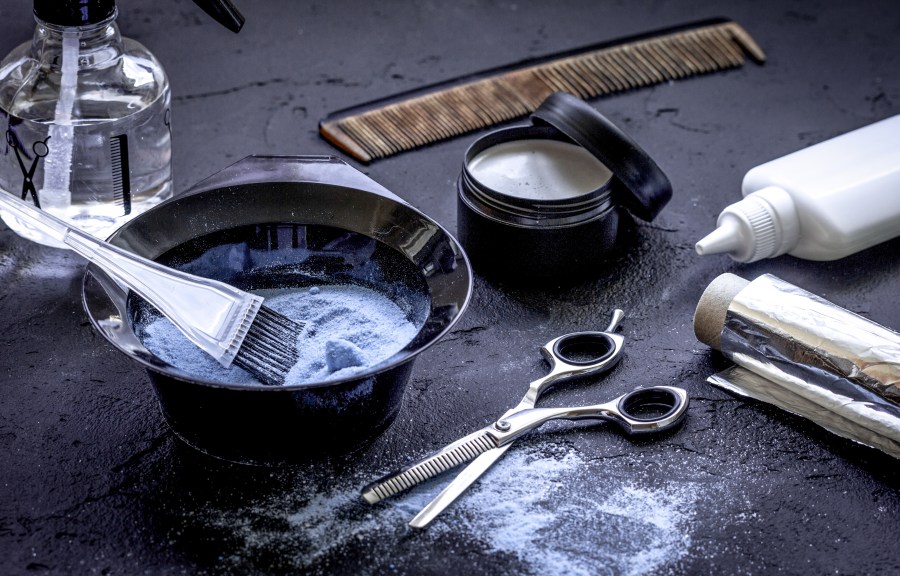"Splat Hair Dye Doing Blue and Purple What Happens if I Overlap the Color "

We all like to change things up occasionally, and one quick and easy way to give yourself a fresh look is with a new hair color. If you're dark- or black-haired, it might be tempting to reach for the bleach – but there are a few natural methods to dye dark hair that won't cause as much damage as bottled peroxide. If you're going for a more subtle change, you might want to try one of these natural dyes first.
Things to Remember About Natural Dyes
Natural dyes might be much better for your hair than chemical dyes, but they aren't nearly as effective. The methods below will only alter your color up to two or three shades, no more. You may not notice much of a change at first depending on your natural shade, but be patient. These methods work cumulatively, so the more often you use them, the stronger your results will be. Natural dyes fade much more quickly too, but that might be a good thing if you're not quite happy with the end result.
The other thing to remember about using natural dyes on dark hair is that some of the more usual methods simply won't work. Blondes or people with light brown hair can use lemon juice or salt to lighten their color naturally, but very dark brown or black hair will not be affected at all. Don't despair, however. There are a few ways to lighten very dark hair without bleach, and the method you choose will depend on whether you want to go a few shades lighter or a few shades redder.
For this method take two tablespoons of raw honey and a tablespoon of cinnamon and mix with a tablespoon of olive oil to make a paste. Add a little conditioner if it's too thick. Use raw honey for this method rather than pasteurized: it contains more natural hydrogen peroxide.
Leave the mixture for a half hour, as this will allow the peroxide in the honey to activate with the cinnamon. Apply to damp hair and then tie it in a bun, cover with cling wrap or a shower cap and let it sit for at least four hours. Overnight works best but be sure to cover your pillow with an old towel in case the mixture leaks. Wash off and enjoy your new lighter shade.
Henna
People usually use henna to darken their hair, but it can lighten very dark brown or black hair and leave gorgeous reddish highlights too. Before you use henna, you should be aware that once you use it you cannot use chemical dyes on top as they simply won't take. If you do want to use chemical dyes after henna, you will have to wait for the henna to fade naturally. This can take anywhere from a few weeks to a few months depending on your hair type.
Make a paste of about three tablespoons of henna powder and a half cup of boiling water. Let this mixture cool and develop for 12 hours before use. Apply to your hair but be very careful as henna will stain everything it comes into contact with. Let the dye sit on your hair for two to three hours and wash out.
Beet Juice
This method won't lighten much, but it will give you a pretty red tint. Juice two beets and mix the juice with a quarter cup of honey. Apply the mixture to wet, washed hair (don't use conditioner). Let the mixture sit wrapped in cling wrap or a shower cap for four hours or overnight, then wash out. Again, be careful of pillowcases and clothes as beet juice will stain them.
Hot Tip: Apple Cider Vinegar
One great hair tip for all hair types and colors is apple cider vinegar — you can use it as a rinse to wash out natural dyes like the ones above, or just shampoo and conditioner. As well as help preserve your new color it will remove build-up from products, calm frizz and leave your hair shiny and healthy.
Source: https://www.bloglines.com/article/how-to-dye-dark-hair-naturally-no-bleach-needed?utm_content=params%3Ao%3D740010%26ad%3DdirN%26qo%3DserpIndex
0 Response to ""Splat Hair Dye Doing Blue and Purple What Happens if I Overlap the Color ""
Post a Comment